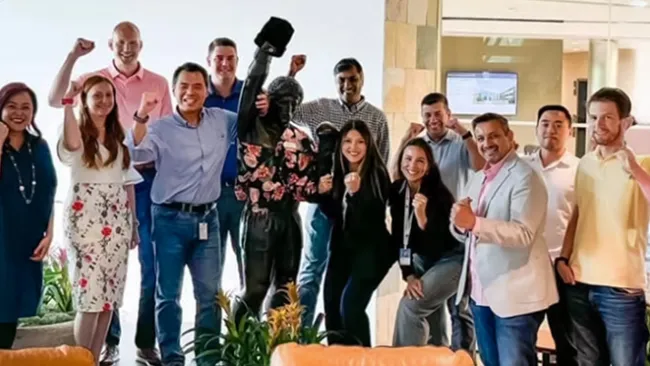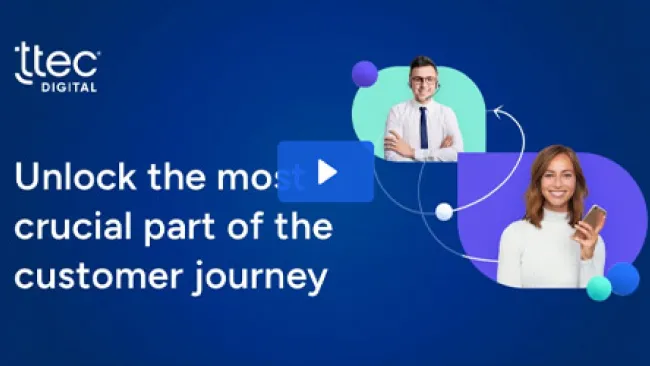There’s a fundamental shift happening when it comes to customer experience, both in expectations and capabilities, but too many brands aren’t prepared to meet the moment.
Until now, it’s been enough for brands to eliminate friction and deliver seamless customer interactions. But not anymore. To truly stand apart from competitors and be something customers want to keep coming back to, brands must embrace the Total Experience – a more holistic, unified experience for everyone who engages with a brand (employees, customers, partners, and other key stakeholders).
But many organizations have responded to changing consumer behaviors by implementing rapid, disparate, find-and-fix solutions. They may intend to improve experiences, but this approach actually has the opposite effect. It has created a set of fragmented experiences for customers that are far from the consistent, dependable, predictable, and brand-aligned characteristics representative of a true Total Experience.
Today’s consumers expect seamless, consistent, proactive, predictive, and dependable interactions – within and across every interaction channel, platform, and business function throughout the entire customer journey. They want a Total Experience, and they want it from the moment they become aware of a brand throughout their entire customer lifecycle.
So, how can brands embrace the Total Experience? Here are five ways to get started:
1. Meet people’s emotional needs
Anyone who engages with a brand wants their interactions to get the job done as efficiently and effectively as possible. But today’s employees and customers also want an emotional connection with brands.
With so much technology at our fingertips to make processes and interactions easier, it can be easy to overlook the emotional aspects of business. But at the crux of every organization are people – the customers, employees, and partners that make it all work.
People want to engage with brands where they feel a connection. Focus on people’s emotional motivation and triggers, then balance those with their functional needs. Getting to the heart of how people feel before and when they interact with your brand will provide meaningful and actionable insights.
Total experience in action: Earlier this year, Disney earned the top ranking in MBLM’s Brand Intimacy Study, which means more consumers have a stronger emotional connection to Disney than any other brand. Consumers in general are connecting more deeply with brands since the pandemic began, and “intimate brands” outperform other companies when it comes to profits and the stock market, the report found.
2. Anticipate what customers want
Savvy brands know that being proactive is key to delivering seamless experiences. It’s not enough to respond the best way possible once a customer contacts you; companies need to be proactive, not reactive.
Invest the time and resources to design experiences that proactively move and motivate customers to the next best step by orchestrating a cohesive journey – not only within channels, but across them.
One key aspect of this is incorporating a “human” touch wherever possible. Design a Total Experience were the digital touchpoints feels like a more personal set of meaningful moments within the journey. Sophisticated automation and artificial intelligence can move the needle in this important aspect.
Total Experience in action: When a telecommunications provider wanted to reduce customer churn, proactive solutions helped. Associates quickly presented offers tailored to each customer and proactively contacted high-value and at-risk accounts before their contracts expired – leading to a 20% increase in sales win rates, and 56% of customers becoming more likely to upgrade their service at the company.
3. Make things personal
Use hyper-personalization to make every touchpoint more impactful. If personalization is the first step toward creating more meaningful interactions, then hyper-personalization takes it a step further by recognizing people’s unique needs and preferences – even within the smallest moments along their journey with a brand.
Don’t forget about employees when it comes to getting personal. It’s important to personalize customer experiences but equally critical to make sure employees feel like the brand truly knows them as well. Crafting an employee experience that resonates with workers on a personal level will make them more connected to their work, more loyal to their employer, and more empowered to generate strong CX.
Total Experience in action: Wanting to deliver more meaningful customer experiences, quick-service restaurant chain Chipotle began using Microsoft Customer Insights to learn about existing and potential customers. Through merging more than 400 million records, the company projects a 34% increase in new customers and cross-sales opportunities, potentially leading to $280 million in annual sales.
4. Do an honest assessment of the customer experience operating model
Evaluate your current operating model with brutal honesty. Even if you have deep investments – monetary and otherwise – in the current way things are done, it’s crucial to take a hard look at whether the processes, technology, and people you have are what’s needed to achieve the total experience of the future.
Similarly, perform due diligence on your current technology stack. A Total Experience is impossible without the right technology, so it’s important to optimize a brand’s technology ecosystem by focusing on cross-platform integration, collaboration, utilization, and custom technology creation.
When implemented well, the right mix of technology tools, processes, and people makes it easier for companies to deliver a Total Experience across all channels.
Total Experience in action: As it moved toward a Total Experience, Schwan’s Home Delivery, a pioneer in frozen food delivery, developed a comprehensive working knowledge of the current state of its customer experience. This included journey mapping, persona development, a review of objectives and insights, and more. Visits to distribution centers, employee interviews, and ride-alongs with sales representatives were all parts of the process.
5. Align with broader goals
There are so many components to consider when it comes to the Total Experience, brands can easily get lost in the minutiae. But Total Experience won’t work if it’s not aligned with broader business objectives, so be sure to take a step back to look at the bigger picture.
Investing in best-in-class tools and people won’t help if there’s not a consistent buy-in from the top down, throughout the organization. Everyone – each team, every business unit, the IT department – needs to share the same mindset and believe in the value of a Total Experience.
When everyone shares the same vision and goal, they’ll be more inclined to adopt the potential new lexicon of terms, tools, and methods that will lead to success.
Total Experience in action: Once Schwan’s Home Delivery had a complete sense of what its customer experience was really like, it developed a detailed plan for achieving a Total Experience transformation by focusing on what was needed to reach the goal and workshopping ways to get there. All departments, including marketing, operations, e-commerce, IT, and finance were involved in the process.
The right partner can help
The benefits of a Total Experience approach are clear: increased loyalty, improved brand reputation, more engaged customers and employees, and higher revenue.
Learn more in the Total Experience Playbook, a comprehensive guide showing what a Total Experience approach means, how it benefits brands, and how to achieve it.
















